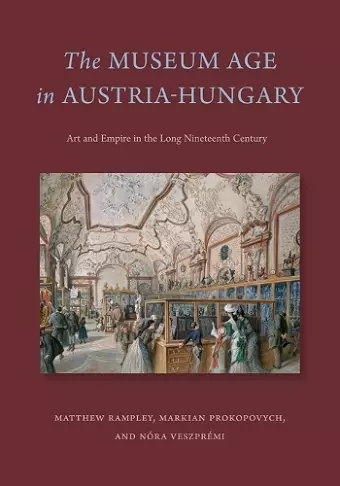The Museum Age in Austria-Hungary
Art and Empire in the Long Nineteenth Century
Matthew Rampley author Markian Prokopovych author Nóra Veszprémi author
Format:Paperback
Publisher:Pennsylvania State University Press
Published:21st Feb '23
Should be back in stock very soon
This paperback is available in another edition too:
- Hardback£83.99(9780271087108)

This important critical study of the history of public art museums in Austria-Hungary explores their place in the wider history of European museums and collecting, their role as public institutions, and their involvement in the complex cultural politics of the Habsburg Empire.
Focusing on institutions in Vienna, Cracow, Prague, Zagreb, and Budapest, The Museum Age in Austria-Hungary traces the evolution of museum culture over the long nineteenth century, from the 1784 installation of imperial art collections in the Belvedere Palace (as a gallery open to the public) to the dissolution of Austria-Hungary after the First World War. Drawing on source materials from across the empire, the authors reveal how the rise of museums and display was connected to growing tensions between the efforts of Viennese authorities to promote a cosmopolitan and multinational social, political, and cultural identity, on the one hand, and, on the other, the rights of national groups and cultures to self-expression. They demonstrate the ways in which museum collecting policies, practices of display, and architecture engaged with these political agendas and how museums reflected and enabled shifting forms of civic identity, emerging forms of professional practice, the production of knowledge, and the changing composition of the public sphere.
Original in its approach and sweeping in scope, this fascinating study of the museum age of Austria-Hungary will be welcomed by students and scholars interested in the cultural and art history of Central Europe.
“This is a well-written and organized overview of the history of fine arts display in late nineteenth-century Austria-Hungary and will be of interest to any scholar who studies cultural production or urbanization in that period.”
—Laura A. Detre Journal of Austrian Studies
“This is a highly original study. There is no other comparative treatment of the development of art museums in the major cities of the Habsburg monarchy, and only such a study can address effectively the analytic questions about the development and functions of the art museums in a changing public sphere that are raised here.”
—Gary B. Cohen, author of Education and Middle-Class Society in Imperial Austria, 1848–1918
“While the history of British, French, and Italian museums has received extensive coverage in recent Anglophone scholarship, the history of collections in the Habsburg lands is much less widely known. Composed by experts in the empire’s many cultural worlds, this volume fills that gap, breaking new ground by illustrating how a polyphonic empire generated a rich profusion of highly diverse museums.”
—Suzanne Marchand, author of German Orientalism in the Age of Empire: Religion, Race, and Scholarship
“. . . this monograph not only represents an important contribution to the history of museums in the Habsburg Empire but also a contribution to the history of the Viennese school of art history, one of the starting points of the history of art as a profession. As such, it will undoubtedly serve numerous researchers as a starting point for further investigations.”
—Dragan Damjanović Austrian History Yearbook
ISBN: 9780271087115
Dimensions: 254mm x 178mm x 21mm
Weight: 594g
300 pages